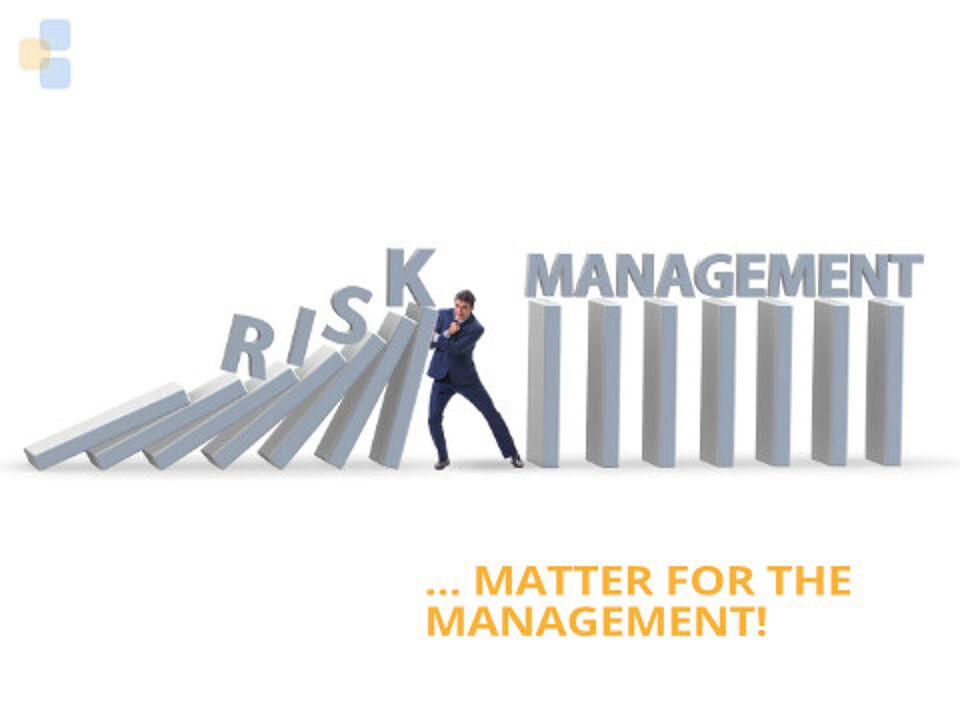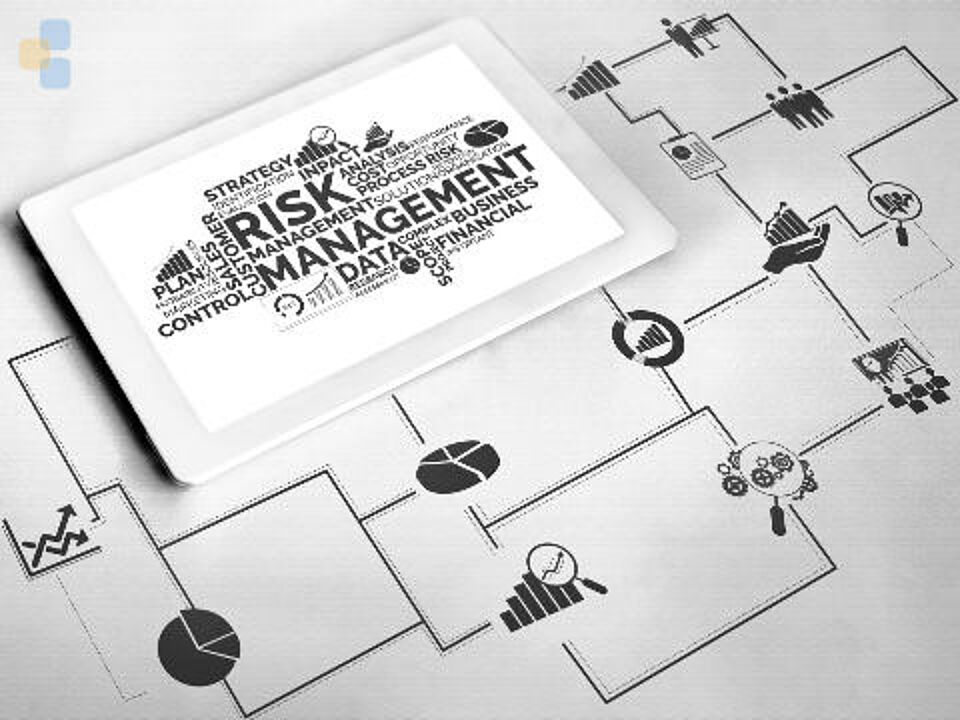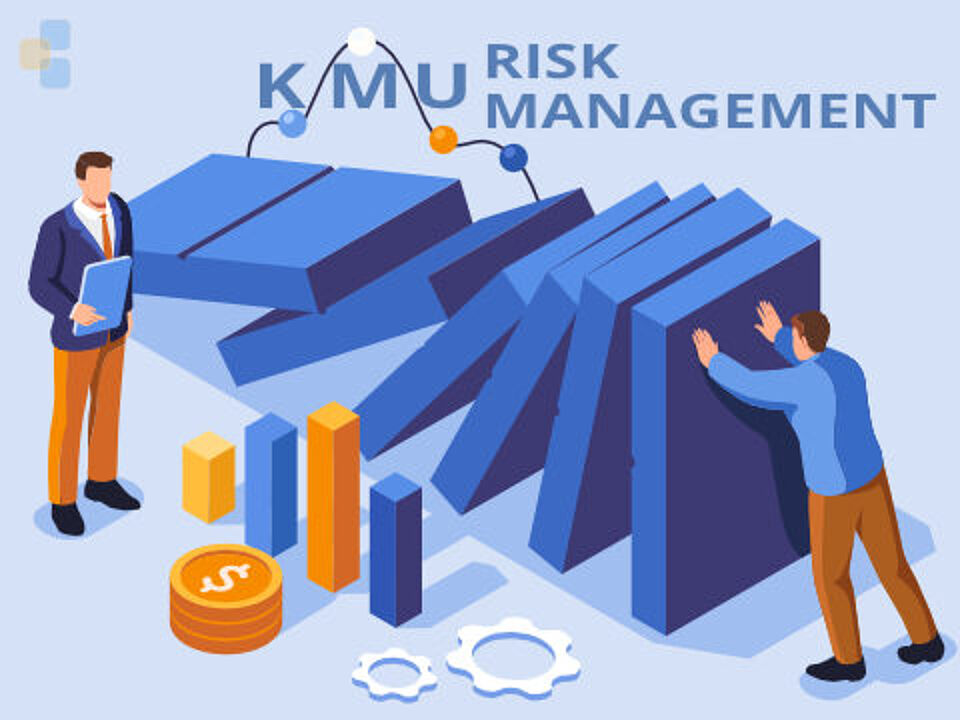
Author: Sandra Effenberger
created on: 09.08.2025, last change: 22.08.2025
Table of content
Why risk management is a matter for the management
Emergency management and business continuity - not an optional extra, but a duty
How to sustainably integrate risk management into your processes
Risk management in small and medium-sized enterprises (SMEs)
FAQ - Frequently asked questions - Risk management
In times of increasing digital threats, risk management is becoming increasingly important for companies. In industries such as energy supply, healthcare, and manufacturing, where critical processes and data play a key role, it is extremely important to identify and manage risks at an early stage. This involves not only identifying potential dangers, but also strategically embedding risk management as an integral part of the corporate structure.
In this article, you will learn how the targeted use of modern technologies and processes can help you proactively manage risks, effectively implement the DORA Regulation, and sustainably integrate your emergency management processes—for greater security and efficiency in your company.
Why risk management is a top priority
Risk management is no longer just the responsibility of the IT department, but has become a strategic issue at the highest level. Responsibility for this often lies with company leaders and decision-makers who set the long-term direction of the company. This is particularly important as reputational, liability, and business interruption risks can increasingly jeopardize a company's competitiveness and financial stability. Effective risk management enables these dangers to be identified, controlled and minimized at an early stage. This ultimately ensures the success of the company. Risk management should therefore be firmly anchored in the corporate strategy and remain a top priority.
Identify and control IT risks at an early stage
In today's digital world, it is more important than ever to identify IT risks early on and actively manage them. Companies are constantly exposed to new threats that can jeopardize their IT infrastructure and data. Effective IT risk management helps identify potential vulnerabilities and take timely action to prevent damage. IT service management (ITSM) plays a central role in this, as it helps monitor all IT processes and ensure that security gaps are closed quickly. Tools such as EcholoN provide valuable support here by enabling the seamless integration of risk management processes into existing IT systems. This ensures efficient and proactive risk identification, which leads to rapid response times when threats arise.
DORA – Understanding and implementing requirements
The DORA Regulation (Digital Operational Resilience Act) presents companies with the challenge of keeping their digital operations running even under extreme circumstances. The regulation requires companies to ensure their digital resilience and to identify and mitigate potential risks.
For companies in industries such as energy, healthcare, and manufacturing, which are particularly dependent on stable IT systems, this means:
- Documentation and sustainable mitigation of digital risks.
- Structured risk management with clearly defined processes and responsibilities.
With flexible solutions such as EcholoN, companies can efficiently implement these requirements while strengthening their digital resilience.

Emergency management and business continuity - not an optional extra, but a duty
In an emergency, every minute counts. Effective emergency management and a business continuity strategy are not optional extras, but crucial factors in the stability and future viability of a company. Companies must ensure that their critical business processes continue to run even in the event of disruptions or failures and can be quickly restored.
Well-designed emergency management includes:
- Early planning and preparation for potential crisis situations.
- Preventive measures and clear instructions for action in an emergency.
With the right tools and a structured process, business continuity can be effectively ensured. A central platform such as EcholoN enables emergency management processes to be integrated seamlessly into existing structures and ensures that the company remains operational even in times of crisis.
Checklist for emergency management:
- Identification of critical processes
- Definition of emergency strategies
- Conducting regular tests and simulations

How to sustainably integrate risk management into your processes
The successful integration of risk management into business processes requires a strategic approach and a clear definition of responsibilities. Risk management should not be viewed in isolation, but must be anchored as an integral part of the corporate strategy. A risk management system should also include the identification and assessment of risks in order to minimize the probability of occurrence and the extent of damage of potential risks. Risk analysis and risk assessment are crucial for systematically identifying and effectively managing opportunities and risks.
Key to successful implementation:

Change management:
The introduction of new processes in the risk management process must be structured and supported by all levels of the company.
Clearly define responsibilities
Every department and every employee should know how they can contribute to risk management, especially in risk communication and the continuous monitoring of identified risks.
Quality Management
Integrate risk management into quality management to ensure that risks are systematically identified and addressed as part of process optimization.
Training
Ensure that all employees understand the importance of risk management and can actively participate in it. Creating transparency and addressing risks are relevant for risk management.
Implementation of ISO 31000
Compliance with the ISO 31000 standard promotes effective risk management and supports the strategic orientation of risk management.
Strategic risk identification
Risks should not only be identified, but also continuously assessed and their probability of occurrence analyzed in order to identify potential hazards at an early stage.
Project Management
The integration of risk management into project management is important for effectively managing risks and opportunities throughout the entire course of a project.
Flexible software solutions such as EcholoN support sustainable integration by enabling modular adaptation of processes without the need for extensive programming. This makes risk management not only efficient, but also future-proof and adaptable to new challenges.
Possible challenges during implementation
The implementation of a risk management system can encounter various challenges. Common hurdles include:
- Resistance within the organization: Employees are often accustomed to existing processes, which makes change difficult.
- Integration into existing systems: It can be difficult to integrate risk management processes into existing structures.
- Long-term adaptation: The threat landscape is constantly changing, requiring regular adaptation of the system.
Solution approach: A modular approach, such as that offered by EcholoN, can help make processes flexible and scalable. Communication and training are crucial to ensure acceptance and support within the company.
Integration of risk management into the entire business cycle
Risk management should be integrated into the entire business cycle:
- Areas such as finance, human resources, and production must be taken into account as well as IT risks.
- Close cross-departmental cooperation ensures that risks are identified early and minimized in a coordinated manner.
Solution approach: With software solutions such as EcholoN, companies can centrally manage all risk management processes, promoting efficient collaboration and holistic risk strategies.

Risk management in small and medium-sized enterprises (SMEs)
For SMEs, the question arises as to how risk management can be implemented with limited resources:
- Simple and pragmatic solutions are needed to manage risks efficiently.
- Software solutions such as EcholoN offer a cost-effective way to integrate risk management processes without having to make high investments.
Solution approach: By using flexible, cost-effective tools and integrating risk management into everyday business processes, SMEs can proactively manage risks without creating bureaucracy.
Conclusion and outlook: Your path to sustainable risk management
Comprehensive and well-structured risk management is essential in today's digital world. Companies must design their processes in such a way that they can not only identify risks early on, but also respond to them effectively. Implementing regulations such as the DORA Regulation and ensuring business continuity require close integration of risk management and IT service management. Flexible and modular solutions such as EcholoN play a key role here, as they enable seamless integration into existing corporate structures while offering a high degree of adaptability.
Next steps:
- Review risk management processes: Ensure that your current processes meet the latest requirements, especially with regard to IT risks and the DORA Regulation.
- Evaluate technological solutions: Rely on modular software solutions that can be flexibly adapted to your specific needs, such as EcholoN.
- Actively test emergency management: Plan and simulate emergencies on a regular basis to ensure that your company can react quickly even in times of crisis.
- Training and awareness: Ensure that all employees develop an awareness of risk management and are able to understand and implement their roles within the processes.
By strategically implementing effective risk management, companies can strengthen their digital resilience and position themselves for the future. Take the first step today to protect your business processes and manage your risks sustainably.
FAQ - Frequently asked questions - Risk management
What are the basics of risk management?
The basics of risk management include identifying, assessing, and dealing with risks to minimize uncertainty in projects and companies. A systematic approach, such as the ISO 31000 standard, provides guidelines for dealing with risks effectively.
How does risk analysis work?
Risk analysis is a central component of risk management in which potential risks are identified and their probability of occurrence and extent of damage are assessed. This enables a well-founded risk assessment and the development of strategies for risk management.
What role does ISO 31000 play in risk management?
The ISO 31000 standard provides an international standard for risk management. It defines principles and guidelines for implementing a risk management system and helps companies systematically identify and assess risks.
How can risks be identified in risk management?
Risks are identified using various methods, such as brainstorming, SWOT analyses, or risk analyses. It is important to identify all possible risks in order to be able to carry out a comprehensive risk assessment.
What are the steps in the risk management process?
The risk management process comprises several steps: risk identification, risk analysis, risk assessment, risk response, and risk communication. Each step is crucial to developing a transparent and effective risk management strategy.
What are strategic risks and how are they addressed?
Strategic risks affect a company's long-term goals and competitiveness.
Addressing these risks requires thorough risk analysis and the development of risk mitigation and management strategies, often as part of the corporate governance process.
How does risk management support corporate governance?
Risk management is an important part of corporate governance because it creates transparency and improves decision-making. By systematically identifying and assessing risks, companies can act proactively and minimize potential negative impacts.
What is a risk assessment?
Risk assessment is an essential step in the risk management process, in which identified risks are systematically evaluated. Both the probability of occurrence and the potential extent of damage are analyzed. Risk assessment enables companies to take targeted measures to reduce risk and develop effective strategies for risk management. Careful risk assessment helps create transparency within the organization. It supports the balancing of opportunities and risks, thereby creating a solid foundation for corporate management.
You may also find this interesting:
- Quality management, quality assurance, and control
- Emergency management
- Blog article: Quality management in companies
- Blog article: Continuous improvement process (CIP)
- Blog article: Project management made simple and efficient
- Blog article: The Deming cycle explained simply – the PDCA cycle
- Blog article: What is an information security management system (ISMS)?
- Blog article: Complaint management – definition, objectives and process
